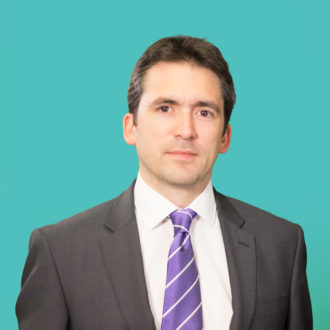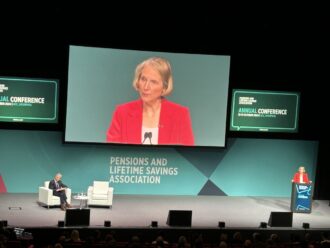Many investors are significantly reformulating their approach to risk management and asset allocation as they diversify their portfolios in response to heightened geopolitical tensions, higher rates, ongoing market volatility and upcoming national elections.
Three clear themes are dominating investors’ focus as they position their portfolios, according to Nuveen’s fourth annual EQuilibrium Global Institutional Investor Survey.
The first is the huge appetite for exposure to energy infrastructure projects as the energy transition plays out. The second is private credit and private equity being prioritised among growing allocations to alternatives.
And third, as a way to position themselves to take advantage of these opportunities, investors are holding portions of their portfolios in higher-quality liquid fixed-income instruments.
In addition, more than half (55%) of global investors feel they can significantly influence the energy transition through their investments, with 57% indicating that they have or are seeking exposure to alternative energy, such as renewable energy, nuclear and hydrogen.
And 51% are interested in allocating to infrastructure, including energy storage/grids and battery storage. Almost 90% of investors are focused on the energy transition in some way.
Across Asia Pacific (APAC), interest in nature-based solutions among corporate pension funds was above average. In Germany, pension funds showed higher than average interest in carbon credits, while North American public pensions showed higher than average interest in legacy infrastructure upgrades.
The smallest group, representing 9%, are first movers in the transition. The largest cohort (37%) is “keeping pace” through structuring portfolios to reflect the energy mix in the economy, while 23% are “getting started” and 19% are doing what is needed to meet regulatory requirements.
“Investors clearly understand their influence and see government policy and technical innovation as the biggest tailwinds for investments in the energy transition for the year ahead,” said Mike Perry, head of Nuveen’s global client group. “Thirty-nine percent consider politicisation to be the biggest headwind, highlighting the importance of partnering with active managers who have robust experience sourcing and navigating the most attractive opportunities.”
Investors are continuing to allocate to private markets, with 55% planning to increase allocations over the next five years with private credit and private equity allocations as leading choices. The trend, however, is less pronounced than last year when 72% planned to increase their exposure to private assets.
Some investors also are planning to increase allocations to unlisted real estate (24%), commodities (22%), hedge funds (21%), private placements (19%), timberland and farmland (both 12%).
Public pensions in APAC are leading the way, with 72% planning to increase their private investments during the next five years. North American insurers and foundations are not far behind at 68% and 71%, respectively.
Private credit and private equity were deemed the most attractive asset classes among investors looking to lean into alternatives, led by North American public pensions (57% plan to increase private credit) and Japanese investors – 59% plan to increase private equity.
While interest in private credit and private equity is strong in all regions, it was not the top pick everywhere: private infrastructure was the main choice for German investors (53%).
New regime
Nearly two-thirds (65%) of investors said we are in a new market regime that is reshaping how they manage risk and return, while eight in 10 believe we have left the era of ultra-low interest rates for a higher-for-longer environment.
Half of investors plan to increase portfolio duration this year, up from just 39% 12 months ago. At the same time, the percentages of investors planning to increase “inflation-risk mitigation” and “cash” have decreased compared with last year’s survey – from 64% to 41% and from 41% to 37%, respectively.
For liability-driven investors, higher interest rates and the resultant improvements in funded statuses represent an opportunity to de-risk portfolios by adding duration.
The normalisation of interest rates has created new opportunities for many investors to de-risk, moving away from equity markets toward high-quality public and private fixed income. Compared with last year’s survey, significantly more investors are decreasing their equity exposure.
Almost half of investors say they plan to increase allocations to investment-grade fixed income, likely reflecting investor expectations regarding a coming economic slowdown. Thirty-eight percent plan to increase allocations to private fixed income, where investment-grade credit is the top pick.
About one in five investors indicated that, over the next two years, they intend to increase allocations to public securitised debt and high yield fixed income. “Across all fixed-income segments, corporate debt is attracting interest from investors,” Perry added. “Corporates were the top choice for investors allocating to investment-grade and below investment-grade fixed income markets as well as private fixed income markets.”
Insurance companies show a stronger preference for private infrastructure debt while endowments and foundations picked private opportunistic and North American public pensions strongly preferred senior middle market loans.





Comments